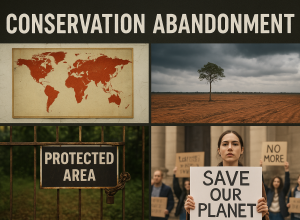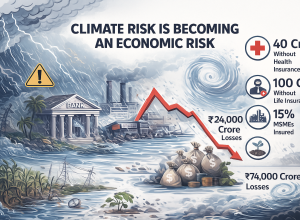How to distinguish true green initiatives from mere marketing ploys?
It’s no secret that in today’s market, sustainability is one of the most potent selling points, and brands have been desperate to present themselves as guardians of the environment. It’s a common refrain in marketing that consumers want their purchases to match their values, and advertising is packed with words like “eco-friendly,” “carbon neutral,” and “sustainable,” reaching out to those consumers. But beneath the glossy campaigns and enticing labels, not all things green are as they appear. However, greenwashing, where companies overhype or lie about their eco-credentials, has made it harder than ever to decipher which sustainability claims are genuine and which are a marketing gimmick.
Greenwashing, a phrase first used in the 1980s, refers to misleading behaviours that make a company or product seem greener than it actually is. Rather than implementing meaningful changes, many firms spend big on snazzy marketing and nebulous commitments designed to attract environmentally aware consumers. The scale of the problem is staggering. According to a 2021 research report from The Changing Markets Foundation, 59% of fashion brands’ green claims are misleading or unsupported. In a similar vein, a new report from TerraChoice found that 98% of products in North America making environmental claims had at least one instance of greenwashing
So why does greenwashing persist and sustainability sell in the marketplace? According to a NielsenIQ study from 2022, 72% of consumers worldwide look for sustainable attributes on products. It is in this context that this new consumer shift prioritizes businesses that can entice buyers through their green credentials — even if, for many, they are more skin-deep than significant.
Even as greenwashing comes under greater scrutiny, regulations are uneven. Terms such as “natural,” “eco-friendly,” or “biodegradable” usually have little in the way of standardized definition, allowing companies to take advantage of these ambiguities. While organizations such as the Federal Trade Commission (FTC) in the United States and the European Commission have recently released guidelines to reduce greenwashing, enforcement is sporadic at best.
True sustainability entails major investment in technology, sustainable materials, and restored processes. For many businesses, it allows a cheaper shortcut: the ability to say they care about the environment without having to actually change anything
Consumers can better protect themselves by learning to spot red flags in marketing. Ambiguous declarations like “eco-friendly” without concrete metrics or evidence are common strategies. Some brands invoke meaningless certifications, or they prioritize one attribute, like recycled packaging, to the exclusion of even larger environmental costs, like overexploitation in the food or timber supply chain. Actual sustainability is marked by transparency. And companies dedicated to meaningful change are transparent about their processes, struggles, and evolutions. In contrast, greenwashing businesses usually employ vagueness when discussing their practices.
True sustainability is not just about making claims in marketing but rather involves the incorporation of environmental accountability into every step of a business’s processes. Authenticity is about measurable goals and transparent progress reporting. For example, Unilever’s Sustainable Living Plan saw 32% fewer carbon emissions from energy consumption in 2008 compared to 2021—an example of leadership, accountability, and long-term change. Reputable certifications such as B Corp, FSC (Forest Stewardship Council), and LEED indicate a commitment to rigorous sustainability standards. Independent endorsements help consumers separate the action from the lip service.
Real sustainability encompasses a product’s entire lifecycle from sourcing through disposal. Patagonia is one example that uses recycled materials, offers repair services, and promotes second-hand purchases to reduce waste. Real brands own up to their faults and explain how they will change. This kind of honesty inspires trust, separating them from the smooth, frequently overblown stories of greenwashing corporations.
Greenwashing is no victimless crime. Aside from duping consumers, it has dire implications for environmental progress and corporate trust. When consumers discover deceptive practices, it undermines their trust in brands and sustainability initiatives more broadly. Some 40% of consumers are skeptical regarding companies’ green claims, according to a 2021 GlobalWebIndex survey, underscoring the widespread distrust that greenwashing creates. Greenwashing hinders genuine action toward addressing environmental issues by distracting away valuable time and resources from actual solutions. Performative companies slow the pace of much-needed change.
Brands that get caught greenwashing run into backlash from regulators and consumers both. The surrounding controversy was an embarrassing blow, putting its credibility at risk and opening the door to a potential lawsuit. Genevieve Mather: A call to action — Businesses can contribute to the solution and consumers have a role in demanding change.
For corporates, it’s not your quotes now, focus on actions. While it may provide little reward initially, investing in sustainability, providing transparency, and working with the supply chain to address systemic challenges will pay dividends in the long run. Transparent communication on successes and shortcomings will create trust and credibility in an ever-more eco-conscious marketplace.
Consumers also have a great deal of power. Advocating for better practices and backing brands with concrete sustainability records will ultimately force industry-wide reform. Researching, looking for trustworthy certifications, and questioning vague statements are important steps in trying to make sure their decisions align with their values.
Greenwashing really is a betrayal of the fight against climate change; it masks what often is not real advancement while systemic environmental problems continue. As the problem is coming to understand and regulations have tightened, it will become very evident what is lip service and what is substantive action.
Transparency, accountability, and collaboration are the road to sustainability. For businesses, it’s simple: commit to true environmental responsibility and you’ll build trust and brand loyalty. Consumers can safeguard a cleaner future through vigilance and informed choices about what to buy. These efforts revolve towards a world where sustainability is not just a marketing tactic but a common pledge to a good environment.





